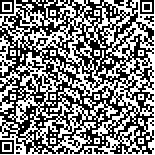| 摘要: |
| 为揭示街区尺度人流空间分布的形
成机制,本研究以天津市具有不同空间特征
的滨江道和华苑区域为例,分析街道网络结
构和土地利用布局对人流分布的影响。研究
发现,街道结构和土地利用分布均是影响人
流分布的重要因素,通过回归分析可知,总体
来看,行人倾向于选择可达性高、土地开发
强度大的街道,但在两个区域不同的空间环
境下,影响人流分布的具体街道结构和土地
利用分布要素不同。在位于城市中心、方格
式路网、拥有城市级商业街的滨江道区域,
商业街以及在大尺度具有较高可达性和通
过性的道路对人流的吸引力较大;在位于城
市边缘、树状路网、作为大型居住区的华苑
区域,连接各小区的、在中小尺度具有较高
通过性的道路更易吸引人流,而小区内部道
路由于功能单一或视野受限,吸引的人流有
限。因此,在分析影响街区尺度人流分布的空间要素时,不仅应关注局部土地利用布局的影响,还应关注区域街道网络结构的作用,针对
不同区域因地制宜地分析影响人流分布的具体街道网络结构和土地利用布局要素。 |
| 关键词: 人流分布 街道网络结构 土地利用布局 空间优化 |
| DOI:10.13791/j.cnki.hsfwest.20210211 |
| 分类号: |
| 基金项目:国家自然科学基金应急管理项目(71741036) |
|
| The Effects of Street Network Structure and Land Use Distribution on Pedestrian Flow |
|
CHE Guanqiong,QIU Baoxing,YANG Tao
|
| Abstract: |
| The distribution of pedestrian flow is the external representation of space vitality,
and the characteristics of the space environment are the material basis for the formation of space
vitality. Therefore, exploring the spatial distribution of pedestrian flow as well as its spatial logic
is an effective way to improve the efficiency of space utilization and enhance the vitality of space.
Previous researches suggest that both street network structure and land use distribution are important
factors that influence pedestrian flow. The former is represented by space syntax, which use
centrality indexes indicating the relative importance of a street at different scales, such as closeness
and betweenness. The latter emphasizes the distribution of point of interests at local level as
attractions to pedestrians.
In order to have a better understanding of the relationa between street network
structure, land use distribution and pedestrian flow, this paper takes Bijiangdao Area and
Huayuan Area with different spatial characteristics in Tianjin as examples to study the
impacts of street network structure and land use distribution on pedestrian flow. On the
basis of research review, this paper uses closeness, betweenness, diversion ratio and convex
hull shape index to represent the accessibility, pass-through probability, degree of detour
and the convex hull shape covered by the street. Each of the indexes is measured with both
angular and euclidean distance at different scales. In addition, this paper uses the intensity of
residential and commercial building to represent the characteristic of land use distribution.
In terms of pedestrian flow, this paper uses “gate count” to count the number of pedestrians
on each road.
The multiple regression results show that when only centrality indexes or land use
intensity indexes are included, R2 are relatively low. When both of them are included, R2
improve obviously, suggesting that both street network structure and land-use distribution
have important influence on pedestrian flow. In general, pedestrian prefer streets that have
high accessibility and intensity of land use development. Respectively, in Binjiangdao Area,
which is located in the city center and is the city-level commercial center with grid street
network, the commercial district and streets with high accessibility at large scale are more attractive to pedestrians. Besides, centrality indexes measured in euclidean distance are more closely related to pedestrian flow. While in
Huayuan Area, which is located on the edge of downtown with hierarchical street network and serve as the residential area, streets within the
sub-zones are not attractive to pedestrians becasue they are difficult to navigate and less in commercial and public services. Whereas streets
connecting the sub-regions are attractive to pedestrians because they have diversified service facilities and are high in accessibility. Besides,
centrality indexes measured in angular distance are more closely related to pedestrian flow.
The regression results suggest that, firstly, to promote walking activity, not only the diversity of land use distribution on both sides of
the street should be increased at local scale, but also the location and role of streets at different scales should be analyzed on the basis of
examining the connection relationship between streets. Secondly, the land use distribution should be in consistent with the scale and potential
of the street to attract pedestrian flow. For commercial complex that requires a large amount of non-local pedestrian flow, they should be
located in areas with high accessibility and pass-through probability at the urban scale. For residential district that requires both vitality and
privacy, it is advisable to arrange service facilities that can serve both local and non-local residents at streets with high accessibility at large
scale. Whereas it should arrange small-scale service facilities that serve the daily life of local residents at street with high accessibility at
a smaller scale. Thirdly, the differences between the two study areas in terms of pedestrian spatial distribution pattern and the influencing
factors suggest that the specific factors influencing pedestrian flow should be analyzed according to local conditions. |
| Key words: Pedestrian Flow Street Network Structure Land Use Distribution Space Optimization |


